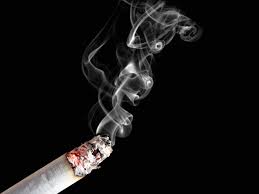Secondhand smoke is produced by a burning cigarette or other tobacco product. About 88 million nonsmokers are exposed to secondhand smoke each year — 32 million of them are children and adolescents. Parental smoking has been shown to affect the lungs of infants as early as the first 2 – 10 weeks of life, and such abnormal lung function could persist throughout life.
Being exposed to secondhand smoke increases the risk for heart attacks and lung cancer.
Exposure to secondhand smoke in the home increases the risk for asthma and asthma-related emergency room visits in children who have existing asthma. Children whose parents smoke are also more likely to be overweight and to have behavioral problems.
Parental smoking is believed to increase the risk for lower respiratory tract infections (such as bronchitis or pneumonia) by 50%. Environmental exposure to smoke is thought to be responsible for 150,000 – 300,000 such cases every year.

